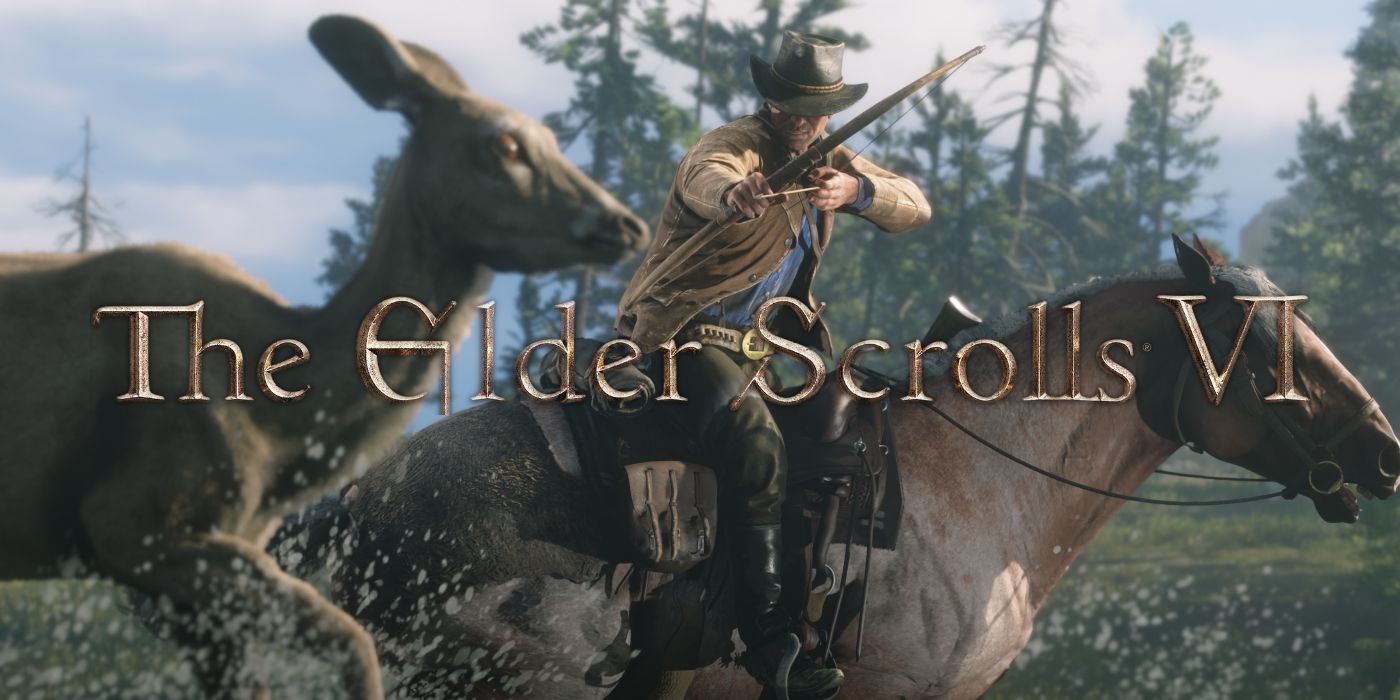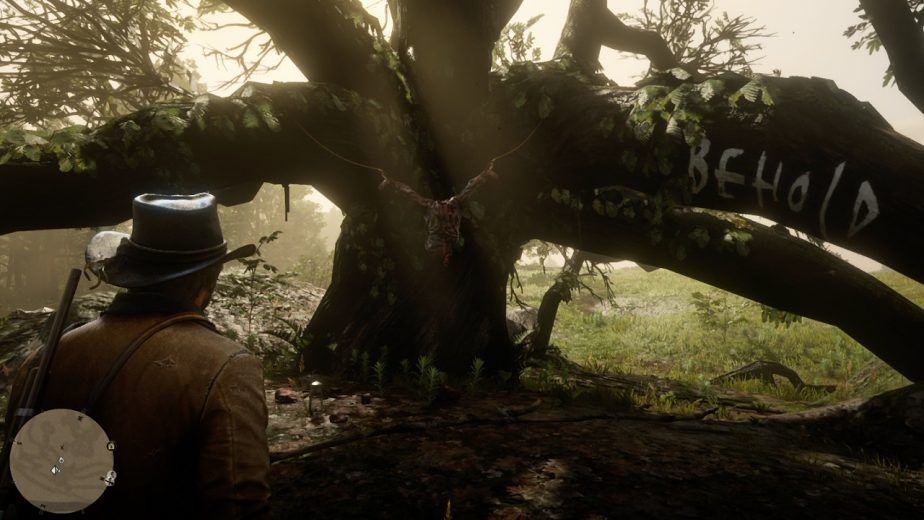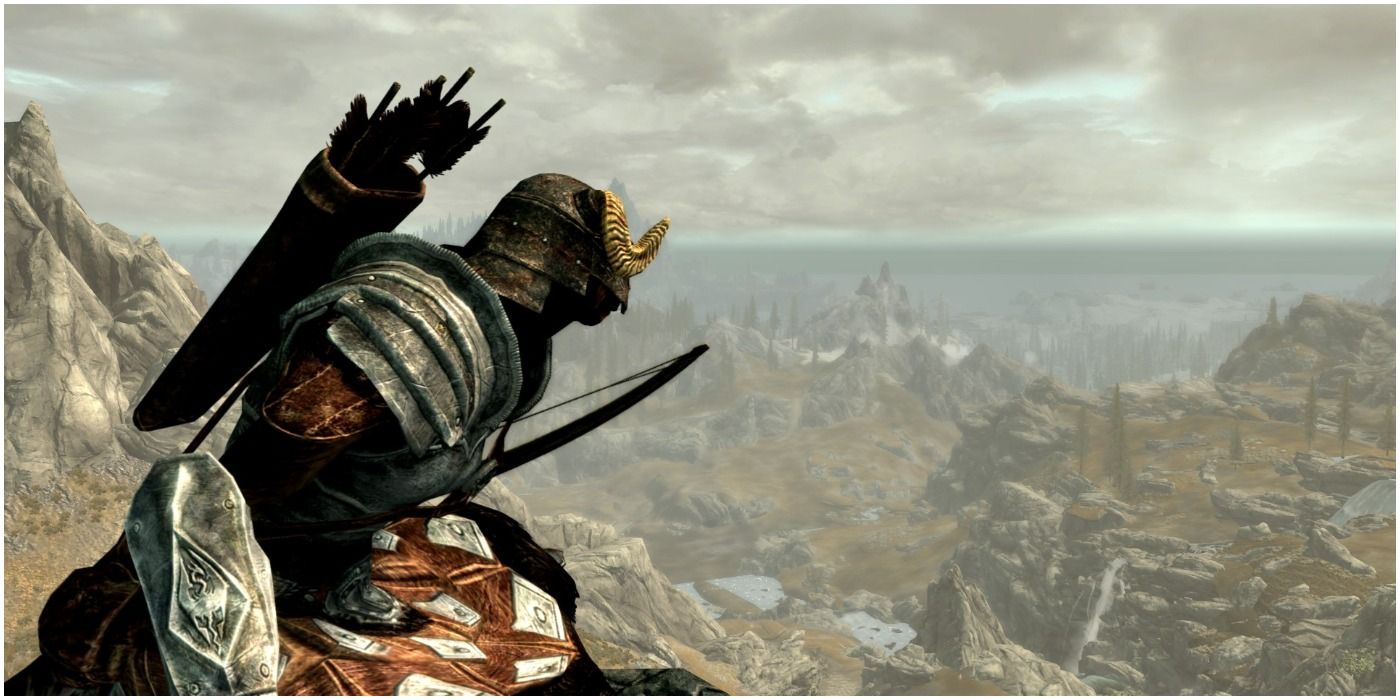It’s no secret that The Elder Scrolls 6 has some big shoes to fill. Skyrim was a genre-defining game when it came to first-person open-world RPGs, and very few of the RPGs that have attempted to emulate it have reached anywhere near the same joint critical and commercial success achieved by it.
Bethesda is faced with a huge challenge. The studio will need to figure out how to improve on common criticisms of The Elder Scrolls games, such as the writing, without stepping on the toes of the millions of players who enjoy the game world for its freedom. Dynamic, environmental storytelling will be key to make The Elder Scrolls 6 feel like the next-generational step forward from Skyrim without undermining playing freedom or railroading them onto preset narratives. In this regard, The Elder Scrolls 6 should look to Rockstar's Red Dead Redemption 2 for a few key reasons.
Environmental Storytelling
Red Dead Redemption 2 is not an RPG, and even if it was, its third-person, narrative-driven open world might more closely resemble a game like CD Projekt Red’s The Witcher than it would The Elder Scrolls. Nonetheless, Red Dead has some key lessons Bethesda should learn about environmental storytelling.
To demonstrate this, there are two quests which have similar themes that can be compared between the two games. The first is the Skyrim quest Laid to Rest, which takes place in the city of Morthal. The other is the RDR stranger mission American Dreams, the beginning of which depends on which of three murder scenes the player stumbles across first.
To begin with, the start of the American Dreams Stranger Mission is already far more immersive. To trigger the quest, the Red Dead 2 player has to stumble across one of three mutilated and displayed corpses, each of which have one third of a map on the body and provocative graffiti written next to the corpse like “BEHOLD.”
The introduction to this Red Dead mystery immediately creates a sense of both intrigue and urgency, incentivizing players to find out who committed these grizzly murders before they can kill again. Not only that, but the fact that the mission then relies on the player finding the other two maps in the world rather than simply following a mission marker helps make the mission at once more creepy and more rewarding.
Compared to Laid to Rest which begins by talking to the Jarl of Morthal, who tells the player to investigate a burned down house, there's a world of difference. When the player arrives at the house, they meet a ghost girl, and it is implied that she may have been killed by her father who burnt down the house. The player follows the clues until they find and slay a master vampire in Skyrim who has been terrorizing the town, but there are a few problems with the execution of the quest.
First, there is no genuine investigation. The player is merely following mission markers while the game journal itself connects all the dots. Furthermore, evidence of the serial killer who features in American Dreams can be found all over Red Dead Redemption 2’s world. There are newspaper clippings that reference similar crimes, and players can even find the bodies of the entire Blackwater Athletics Team, a mystery that can only be solved once the player has traced the killer to their lair and noted the limbs forming a “B” which can be found at both locations.
In other words, the Skyrim questline feels like a questline. It is relatively self-contained, and the player follows each marker from A to B in a relatively linear fashion, which means that even one of the most tragic quests in the game has almost no real sense of atmosphere to it compared to the genuinely terrifying American Dreams mission. There are other vampires in the area as established in the Dawnguard DLC, and yet no connection is made between these two local vampire clans, and very little can be seen of the effect that this huge vampire presence is having on the town outside of the quest.
Beyond Skyrim
One of the things that helps distinguish the towns in Red Dead is their environmental storytelling. A Red Dead 2 player who visits Strawberry, for example, can discover a completely tangential story involving the Mayor of Strawberry fleeing Princeton university with his lover, another male professor, after their relationship was discovered. This mystery is tied into all other aspects of the town, with some townsfolk even speculating and leaving the player red herrings, like suggesting that the Mayor keeps his wife locked up in his house when, in fact, she does not exist.
In comparison, towns like Morthal, Dawnstar, and Falkreath risk feeling similar not because their layouts and architecture are very alike–which they are–but because besides some flavor dialog and guard interactions, the residents very rarely reference the things going on in their lives if it doesn’t directly point the player towards a specific questline.
Morthal’s residents and guards, for example, will sometimes reference the burnt down house that the ghost girl can be found in and will encourage the Dragonborn to go and speak to the Jarl, but this clear sense of direction is far less compelling than travelling through the town and picking up on the story more indirectly through various clues and comments. The Elder Scrolls 6 needs to make its world more detailed and more focused than Skyrim’s if it’s going to achieve the same acclaim as its predecessor and feel like it’s taking the genre into the next generation of consoles.
The world needs to feel more like it exists independently of the player, not simply to put the player on-track towards certain self-contained questlines. If Bethesda is able to pull this off in a similar way to Red Dead Redemption 2, then the game might be able to forge its own identity distinct from games like Skyrim while still delivering the freedom of the Elder Scrolls experience fans have come to love.
The Elder Scrolls 6 is currently in development.



